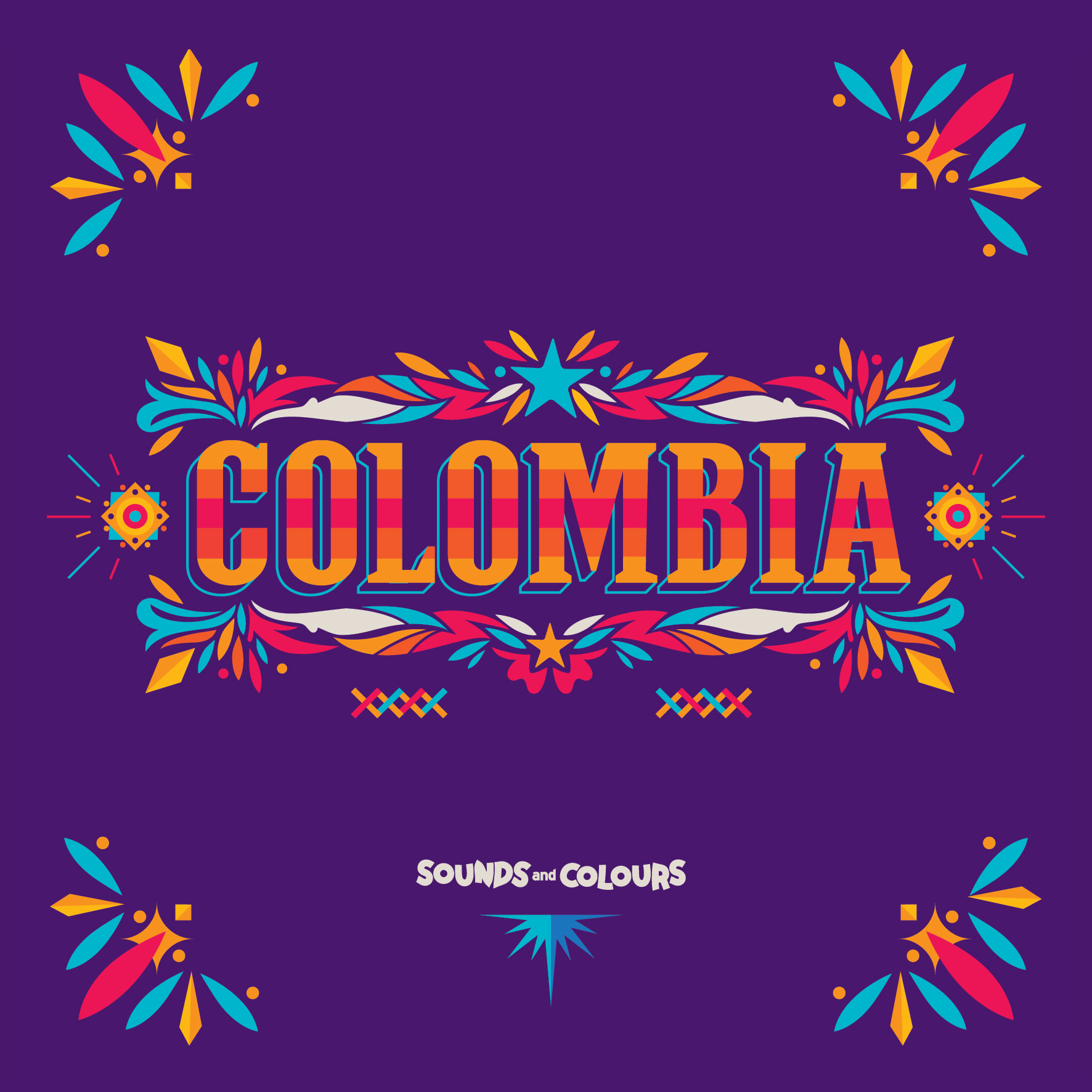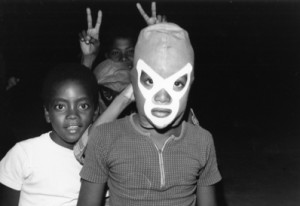Overshadowed by its over-bearing neighbour Brazil – both economically and culturally – Colombia is however in an ascendancy of its very own, reinforced, to some degree, by the recent spate of compilations from Soundway, Analog Africa and Honest Jon.
One of the most vociferate voices and champions of both Colombia and Latin America, is the punctilious online blog Sounds and Colours; whose archive and updated news reports, reviews, analysis and features prove to be the amongst the most in depth and thorough on the subject. Covering an abundance of topics from cinema, art and music, to the sociological issues of the day, the vivid site peruses all facets, whether positive or negative.
As an extension, they’ve published an informative ethnographical, printed guidebook to Colombia – a project funded from advance orders and supporters – made-up of various articles that, from the ground up, chronicle the very fibre and soul of a country that’s used to making the headlines for all the wrong reasons.
Bogotá, Calí and Medellín, towns previously renowned for their violent connotations – the glaring ominous spectre of drug lord Pablo Escobar still looms large – are now painted in a new light. Despite, or rather in spite of, the miasma presence of drugs and links to crime cartels; the unstable government tired by decades of in-fighting; the still active militia and rebels (FARC) groups; displacement of millions and social stigma cast upon both the indigenous and slave-descendent classes, Colombia is starting to come to terms with its past and become a burgeoning beacon for business. Thanks in part to the funds from America and the west; especially the military training, which helped to curtail and reign in the drug problem – much to Mexico and the surrounding areas dismay, as the trade was pushed over the boarder instead.
It’s probably to the author’s of this book’s credit that they expose and meet these problems head on. Who was aware – except for the scholar or native of South America – that millions of Colombians, displaced by conflict, had moved over the border into Ecuador, or that an even greater number flocked towards the so-called Socialist oasis of Venezuela, promised with free healthcare, education and housing for all, with or without legal documentation.
Furthermore we learn that not just Colombia but South America as a whole is the biggest sponsor and investor is China. Starting from the nominal entry level of $1 billion in 2008 they’ve since pumped a further $75 billion into the continent, more than the World Bank, IMF and BID combined. Unlike the restrictions imposed on loans by Europe and the US on trade, economics and politics, China’s prove to be more attractive, with a no-strings attached policy – though this may seem somewhat naïve, as China is inevitably gaining influence over the continent’s leaders to the determent of the west.
Sounds and Colours founder Russell Slater collates and edits this congruous annual, celebrating the diversity, yet also exposing the scandals: excerpts from part 10 of the ‘Throwing Stones At the Moon: Narratives From Colombian’s Displaced By Violence’ series prove poignant, with its eye-witness accounts on the horrors of a landscape and people scarred by civil and drug wars. Regardless, Colombia is shown in a very favourable light, with a host of personalised purviews from a thorough writing team.
Loosely represented by four regional scenes – the Atlantic coast, Pacific coast, Andes, and ‘Llanos Orientales’ (eastern plains) – the varied styles that permeate these locations are explained in a brief but scholarly fashion. Música Tropical, Cumbia, Vallenato and Palenque all take on a certain mythological status: the lyrical accordion-led Vallenato – adopted by the drug cartels – shares the same ‘Faustian pact’ so beloved of the blues, with its leading talents playing up to the many local fables of gaining almost superhuman powers after duelling with the devil himself.
From the turn of the century through to more recent times, there are interviews and meditations on Disco Fuentes – the legendary Medellín studio, home of Colombian salsa that’s recently played host to the acclaimed Ondatropica project – , the Barranquilla carnival – the gateway port to Colombia’s multi-ethnic and omnivorous hybrid of African and Latin grooves – and the impact of the Caribbean sound systems.
To get you in the right frame of mind, to set the ambience, an accompanying 16-track CD brings these musical and cultural investigations to life. It also amplifies the vibrant and multifaceted Colombian scene with electronica fusions and evocative neon-lit contributions from La MiniTK del Miedo, Connector and La Blanquita Farm. Other delights include The Meridian Brothers’ ghost house bonkers ‘El Jazz del Chupasangres’, the Kosmiche psych folk of Planes, and the very strange exotic vibes of Los Pirañas, whose ‘Monsruo Prometedor (Homenaje al Manzanu)’ sounds like the Latino equivalent of the BBC Radiophonic Workshop.
Afro-Colombian examples rub up against marimba and wafting Caribbean languished sways, whilst stopovers at the birthplaces of Palenque and Cumbia cast a gaze back to the country’s roots and folklore. The music alone is worthy of the admission price, and it’s worth slipping on before you indulge the book.
Guided, inspired, and at times forced, by a wealth of outside influence, Colombia is – and for most of its history – a multi-cultured simmering melting pot. The slave trade (Colombia has, after Brazil, the largest African descendant population in South America) made the most seismic impact, along with European colonization, but it’s also attracted a curious and literal crowd of thrill seekers, namely the ‘hallucinogenic’ journey-bound William Burroughs and Allen Ginsberg. Both writers set out on a mystical travail to try the local powerful mind altering Yage – a trip immortalized in the synonymous ‘The Yage Letters’.
Of course this book wouldn’t be complete without mentioning Colombia’s most recognized and adulated author Gabriel García Márquez, whose ‘One Hundred Years Of Solitude’ and bio are rightfully highlighted and accompanied by a beginners guide to his lesser-known work.
Far from stewing on the past, the Colombian contemporary art and Cinema scenes show a highly promising generation, looking within, but finding a wider audience outside South America. Whilst hardly household names, they are on the right path, claiming praise and respect from admires far and wide. The future does at least look rosy for the country’s film industry according to this book and they have, unfortunately, a wealth of tragedy and drama to draw from.
A gamble if you like, is whether a free to view online site can persuade you to pay for the privilege of reading a printed version of its content – yes the accompanying CD helps. Personally I’ve always favoured print and can’t stand reading from a screen, but whether enough people will succumb is anyone’s guess – enough must have for this project to get off the ground in the first place. Still, one of the best reads and reference guides I’ve ever come across, with a bounty of discovers to pique even the most hardened of fans and collectors.
Out now
http://www.soundsandcolours.com/01-colombia/
[Rating:4]





